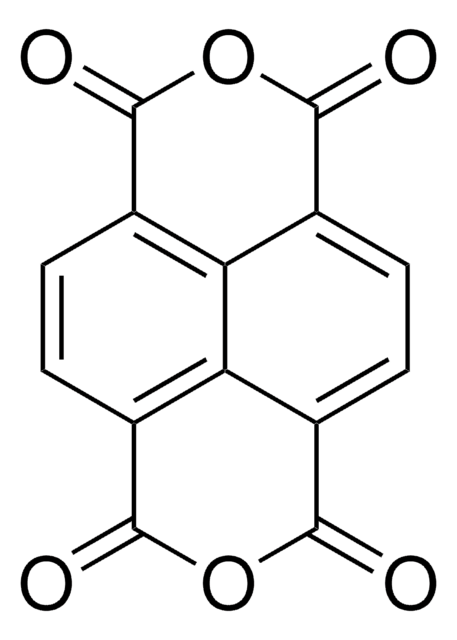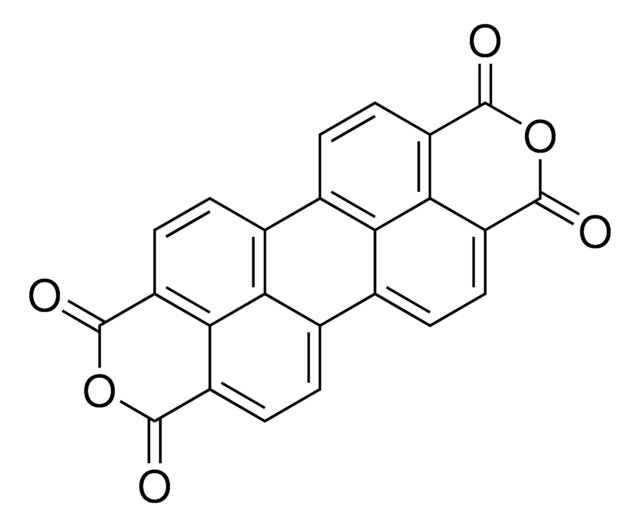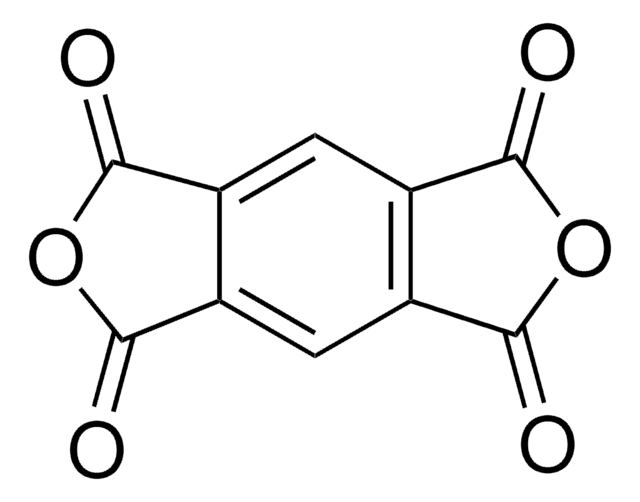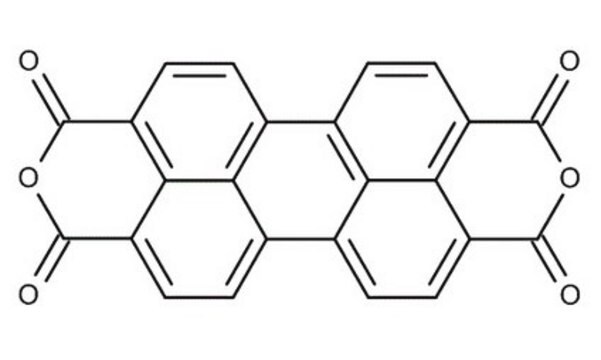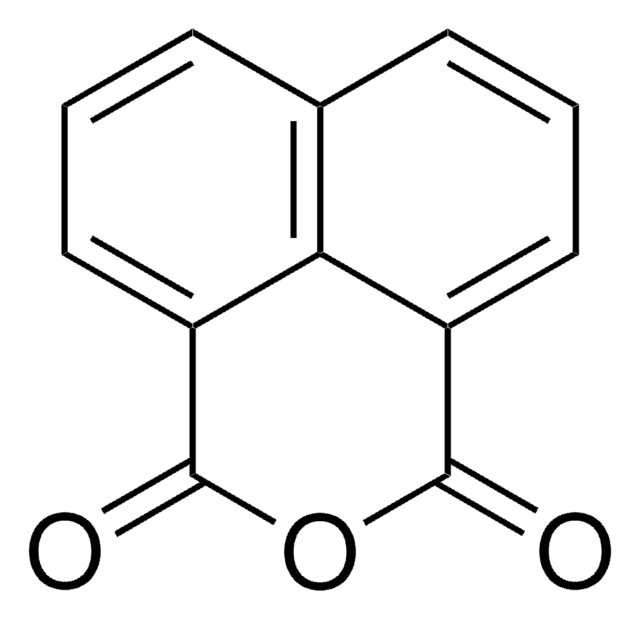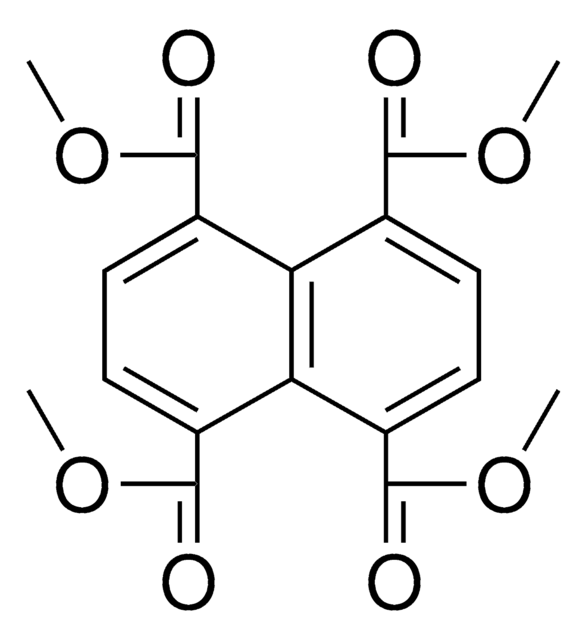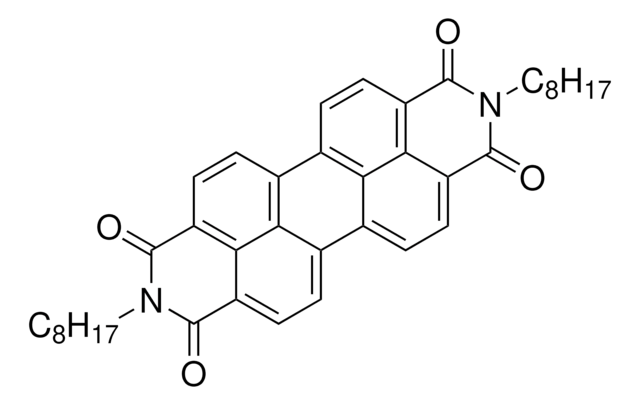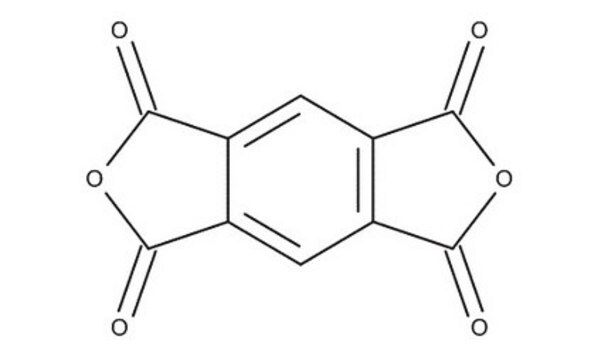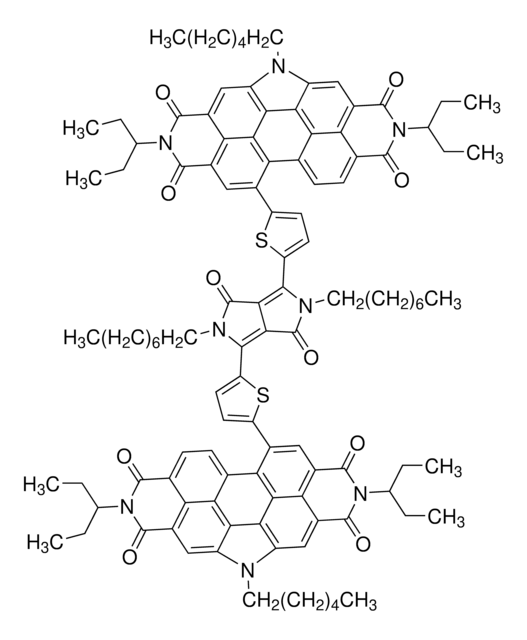932221
1,4,5,8-Naphthalenetetracarboxylic dianhydride
≥98%
Sinónimos:
6,13-Dioxatetracyclo[6.6.2.04,16.011,15]hexadeca-1(15),2,4(16),8,10-pentaene-5,7,12,14-tetrone, Isochromeno[6,5,4-def]isochromene-1,3,6,8-tetraone, NTDA, Naphthalene-1,4,5,8-tetracarboxylic dianhydride, NTCDA
About This Item
≥98%
Productos recomendados
grade
sublimed grade
Quality Level
assay
≥98 (elemental analysis)
≥98%
loss
0.5% TGA, > 270 °C (weight loss)
mp
>300 °C (lit.)
solubility
dichloromethane: soluble
fluorescence
λem 392 nm±10 nm in dichloromethane
λ
in dichloromethane
UV absorption
λ: 366 nm±5 nm Amax
SMILES string
O=C1OC(=O)c2ccc3C(=O)OC(=O)c4ccc1c2c34
InChI
1S/C14H4O6/c15-11-5-1-2-6-10-8(14(18)20-12(6)16)4-3-7(9(5)10)13(17)19-11/h1-4H
InChI key
YTVNOVQHSGMMOV-UHFFFAOYSA-N
¿Está buscando productos similares? Visita Guía de comparación de productos
Application
signalword
Warning
hcodes
Hazard Classifications
Eye Irrit. 2 - Skin Irrit. 2 - Skin Sens. 1 - STOT SE 3
target_organs
Respiratory system
Storage Class
11 - Combustible Solids
wgk_germany
WGK 2
flash_point_f
Not applicable
flash_point_c
Not applicable
Elija entre una de las versiones más recientes:
Certificados de análisis (COA)
Lo sentimos, en este momento no disponemos de COAs para este producto en línea.
Si necesita más asistencia, póngase en contacto con Atención al cliente
¿Ya tiene este producto?
Encuentre la documentación para los productos que ha comprado recientemente en la Biblioteca de documentos.
Nuestro equipo de científicos tiene experiencia en todas las áreas de investigación: Ciencias de la vida, Ciencia de los materiales, Síntesis química, Cromatografía, Analítica y muchas otras.
Póngase en contacto con el Servicio técnico